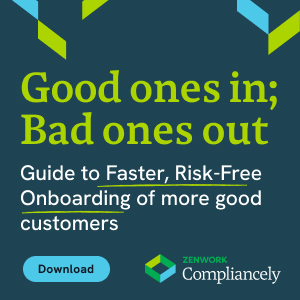Digital Identity Verification to Comply with KYC Rules

As each day passes, the risk of identity fraud increases. The cost of onboarding a fraudulent vendor or customer is too high to neglect. This is why businesses are looking for alternatives to traditional identity vetting methods.
With the rise of digital transformation within the business sphere and with a surge in establishing digital infrastructure in the post-pandemic era, businesses within the finance, insurance, and banking industries are looking at reliable yet effective digital identity verification solutions.
But how does digital identity verification translate to effective vetting and validation? What are the benefits? And how can a business integrate such a dynamic tool into its ecosystem? We will be addressing all such questions and more in this blog.
Defining Identity Verification
Identity verification is a simple process where a business or an institution reviews and validates the identity documentation and identity records of a customer or a vendor at the time of onboarding.
To verify and validate the identity of a customer or a vendor, the business reviews the identity documentation submitted to the local, state, and federal authorities by the customer or vendor.
Information such as the tax identification number (TIN), employer identification number (EIN), name of the business, address, and more are validated when verifying an individual’s identity.
Example: When you want to open a savings account with a bank, you’re required to submit certain identity documentation as “proof of identification”.
This proof of identification includes an ID card with your social security number, license, passport, telephone or electricity bill with postal address, and other documents. It is important to note that all these forms of identification are already recorded in the authorized databases.
The bank or the financial institution that you are approaching to open the savings account will use this information to verify the details per the government-authorized records.
What is Digital Identity Verification
Digital identity validation is a paperless identity verification process wherein the business requires its customer or vendor to provide digital proof of identity. The information is stored and verified per the authorized databases and resources.
Essentially, it replaces the paperwork involved in the traditional identity vetting process and brings in advanced, paperless identity verification tools and experiences.
Benefits of Digital Identity Verification
Digital identity verification allows businesses to identify, verify, and validate the real-time compliance status of an entity or an individual. You can validate the tax, finance, business, and security compliance status of a business in real-time.
However, it plays a bigger role than just screening your incoming customers and vendors. So, here are the many ways in which digital identity verification helps businesses establish compliance.
- Improved business transparency
- Improved identity assessment
- Accelerated credibility assessment
- Minimized business and security risks
- Increased customer approval rates
- The optimized vendor onboarding experience
- Enhanced consensus between contracting parties
- Improved tax compliance
- Improved internal audit reports
- Effective profile vetting
- Improved business decision-making
Digital Identity Verification & KYC
Digital identity verification is one of the most underrated steps involved in Know Your Customer or Know Your Client experiences.
When businesses integrate an automated digital identity verification solution within their digital framework, it smoothens the identity vetting process and fosters the client-customer, business-vendor, and business-customer relationships.
A typical KYC enrollment or onboarding process requires the customer or the vendor to provide certain identity documentation, such as the social security card, name, address, and more.
Depending on the business requirements, the onboarding business may ask for further proof of identities, such as the taxpayer identification number (TIN), employer identification number (EIN), business address, and more.
This information is vetted against the authorized databases and government watch lists to confirm the validity and credibility of the information. Once the individual’s information is “verified”, the subsequent steps of the process take place.
Did You Know?
In 2018 alone, identity theft is the single-biggest data breach incident reported globally, comprising 65% of the total data breach incidents. With the rise in cybercrimes, specifically data breaches and identity breaches during and after the pandemic, businesses are left with no other alternative than to upgrade and regulate their identity verification methods (1, 2).
Integrating Digital Identity Verification Solutions into Your Business
A standard screening solution is no longer enough to establish, regulate, and stabilize your KYC processes and identity validation protocols.
It is essential to note that while your basic screening practices may help you start your KYC processes, they may not be sufficient to maintain systemic regulatory compliance.
Businesses of all scales from banking, insurance, finance, and other industries are starting to notice the importance of integrating a digital identity validation infrastructure into their ecosystems to establish compliance.
This is why businesses like yours are looking at dynamic identity verification interfaces such as Compliancely to establish validation and scale up to meet the ever-changing compliance requirements.
Compliancely allows you to verify an individual or an entity’s real identity and credibility by searching hundreds of authorized watch lists and databases. You can view the results within seconds and get real-time compliance status reports.
This helps you make informed business decisions and ascertains self-compliance regimes.
What’s more? All of this takes less than a minute to do.
And it all begins with a quick sign-up
